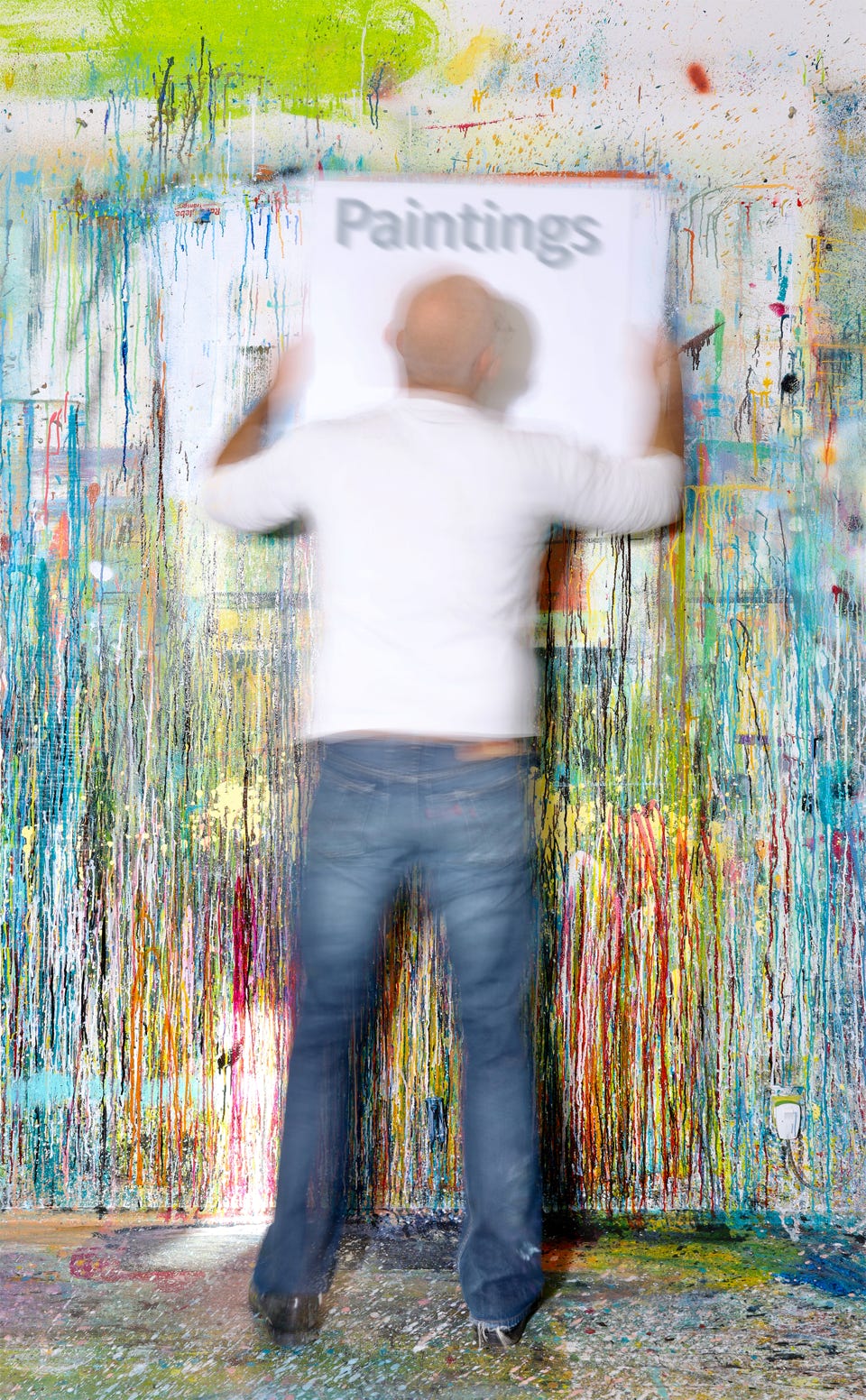
Markus Honerla
A painting is like a new window in the house you live in. You can look either outside or inside. It can show you the world and tell about it, but also about yourself.
Markus Honerla, 2025

A painting is like a new window in the house you live in. You can look either outside or inside. It can show you the world and tell about it, but also about yourself.
Markus Honerla, 2025
• born in Dresden
• Evening course in painting at Dresden University of Fine Arts
• Studies in painting and sculpture at Düsseldorf Art Academy
• Master student of Prof. Tony Cragg
Contact
Markus Honerla
Gustav-Freytag-Str. 13
01277 Dresden, Germany
+49 172 4406569
Honerla‘s paintings sneak surprisingly into the viewer’s life.
They lead to new terrain whose existence we only suspected.
They invite us to spend our days and nights with them.
They are like a good friend.
a good friend
Simply put, the blurred lights illuminate the part of an image that is full of mystery and magic.
Markus Honerla, 2024
The Sea
Be the gleam of my eye
When the night comes on
And give me your wildly pounding hearth
And the aching fury of your waves
Against the storm and against the icy grip of time.
So that my longing shines in the riddles of your depths
And flies up with the chants of the floating shore.
Sabine Aurich-Rogge exhibition opening, 2022
Markus Honerla’s abstract painting is characterised by his intense engagement in sculpture and painting during his studies at the Düsseldorf Art Academy, as a master student of Tony Cragg, as well as later in photography and digital image processing. What really fascinates him about painting is the immediacy of real time. Nothing can be limited, blown up or repeated as if using a computer. Painting requires maximum skills. His artistic experiences in several genres give his work its distinctive style. Relievos consisting of fine parallel lines reveal layers and structures moving apart from one context and being slid over others. These structures and fragments allow for different perspectives on various worlds at just one look.
The Frankfurt Art Experience, 2020
It’s all about colour
Markus Honerla has worked in several genres,
but what really got him is painting.
Tony Cragg, Richard Serra, Magdalena Jetelová, Bruce Nauman, Donald Judd – when Markus Honerla enumerates the names of people who influenced him during his studies at Düsseldorf Art Academy, it sounds like a personnel list of Documenta during the 1980s and 90s. In Düsseldorf, the first division team of artists had gathered, they were teaching at the academy, making exhibitions. Before, Honerla had attended the evening painting course in Dresden, and not just compared to that, Düsseldorf must have seemed to him like enormous freedom: openness between the different genres of art – from photography to stage design – instead of physical separation between the subjects painting and sculpture, open-mindedness for all currents of this world instead of regional echo chambers.
While Honerla was increasingly focusing on the field of sculpturing when he lived in Düsseldorf, today painting is central to him. That there had been a long chapter of digital image processing in Berlin during the 00s should also be mentioned. What we see now is flawless flatware for the wall, created in the classical way using brush and paint. The beginning is marked by one specific painting: “ASA NISI MASA” from 2007. It is one of the first paintings Markus Honerla brought onto the canvas after about 20 years of abstinence from painting. A start going along with the insight that the contact between artist and canvas is immediate and direct. Whatever appears on it comes up in real time and is neither limited by a computer’s processing power, nor by the usual technical effort typical for the sculpturing scene of the 1990s. Compared to that, painting is a downright organic way of working with minimum use of resources, but still requiring maximum skills in order to give a sentiment shape and colour. In case of Honerla, structure also plays a role. In his strictly black and white series “Land”, it is decisive: Relievos of fine parallel lines create forms, widen into landscapes. In his études, however, the paint appears as if cut out of paper strips. In general, Honerla quite often uses collage looks, but he creates them using paint only. Filmogen lacquers, by the way, put on top of one another, building several layers. And it is exactly this technique that seems to close the circle – to sculpturing, when Honerla understands the individual applied paints as delimited layers and juxtaposes matt and shiny surfaces in an extremely exact way. As well as to digital image processing, when forms detach from their context, suddenly, and are being laid over others by Honerla.
Ultimately, it is all about paint and colour. Not as a texture, but as red, yellow, and blue. The three elementary colours creating all those brilliant paintings.
Siiri Klose, 2018